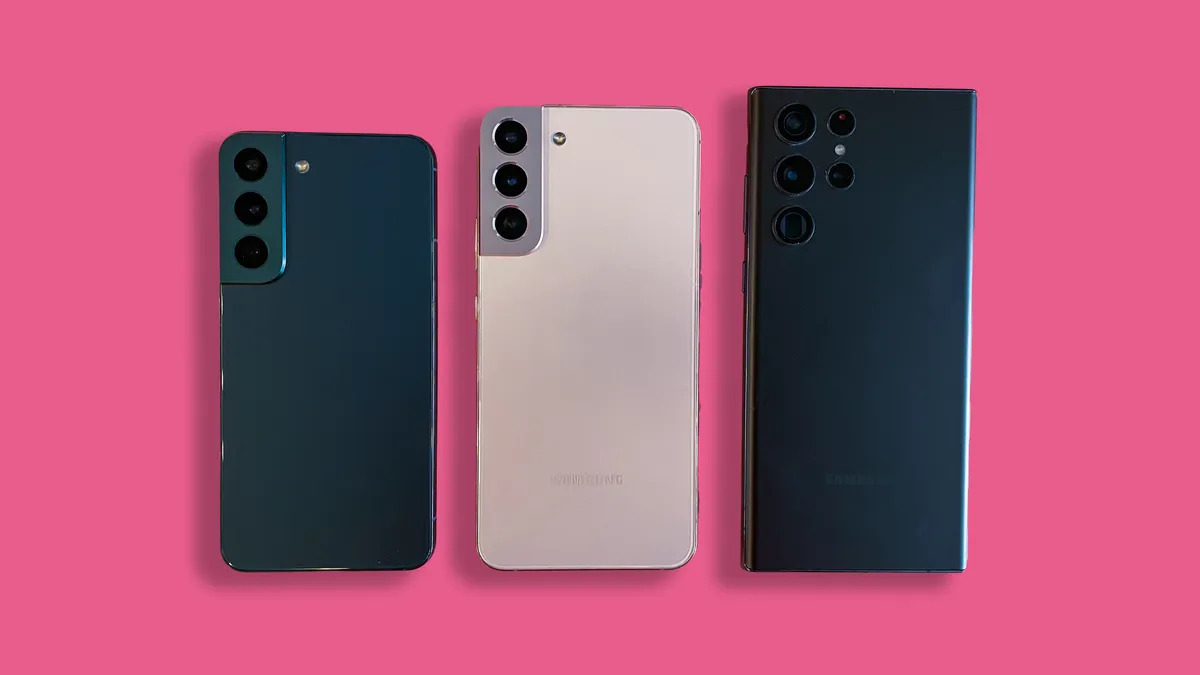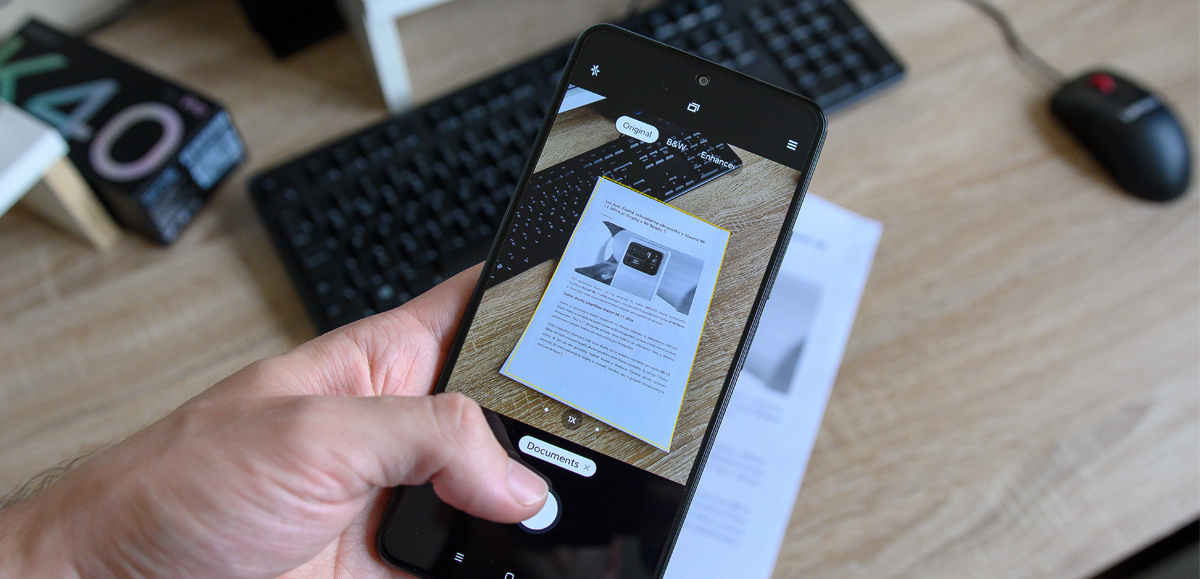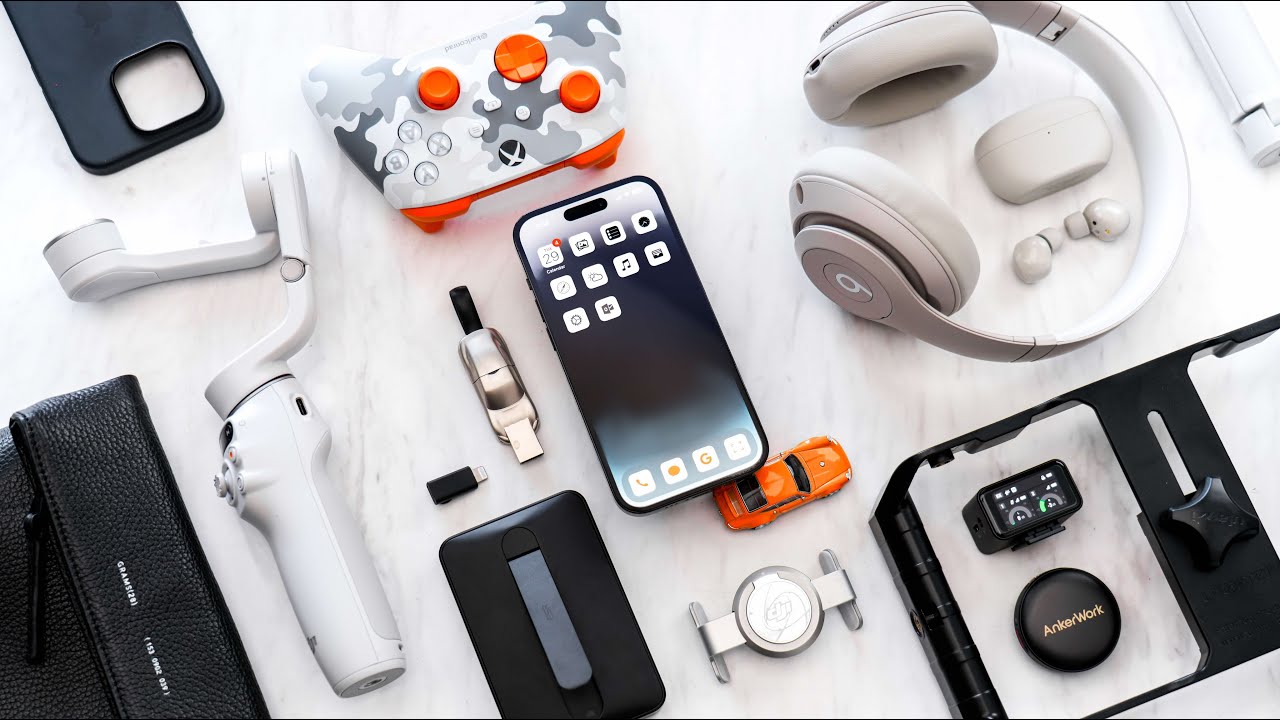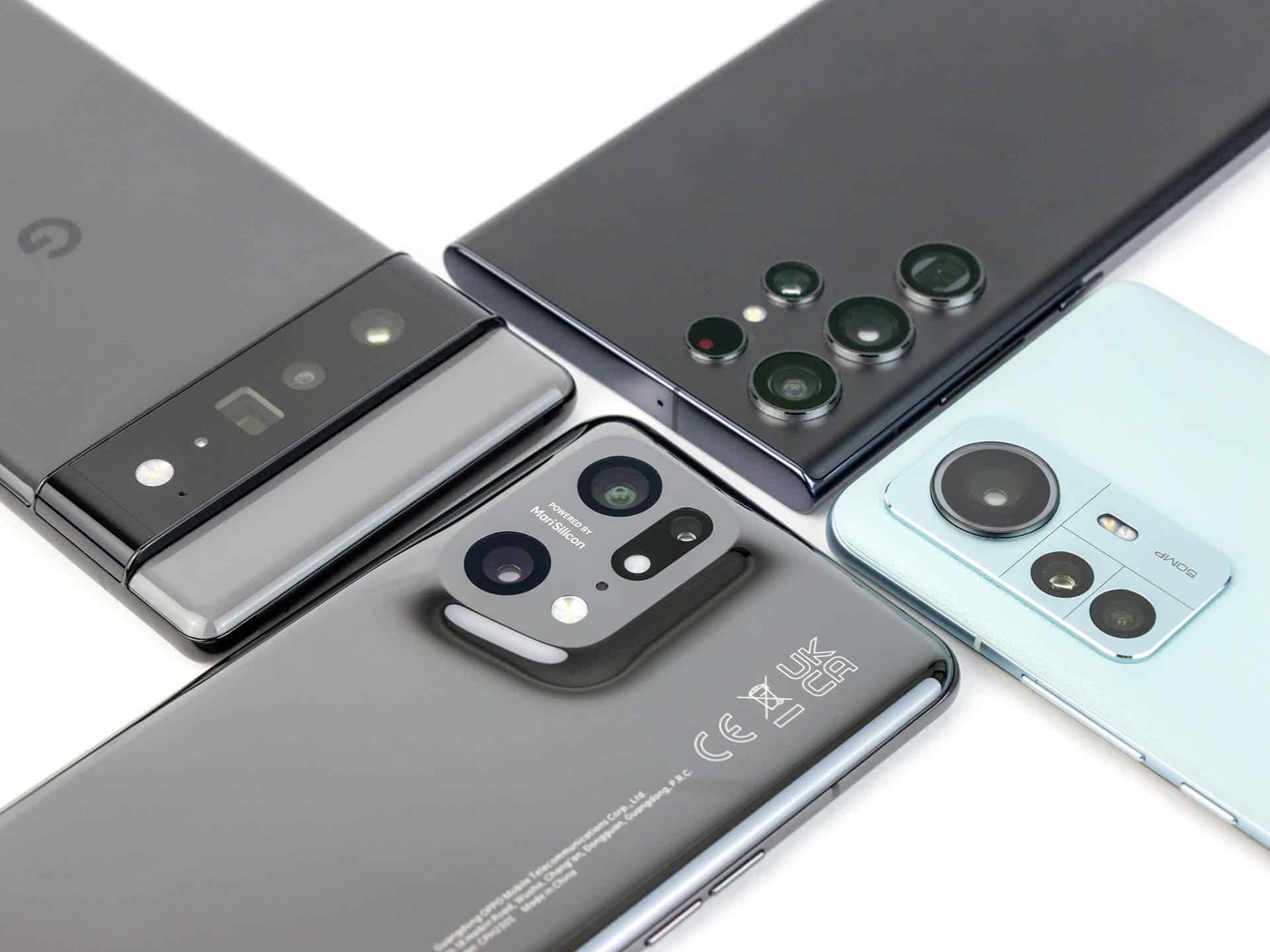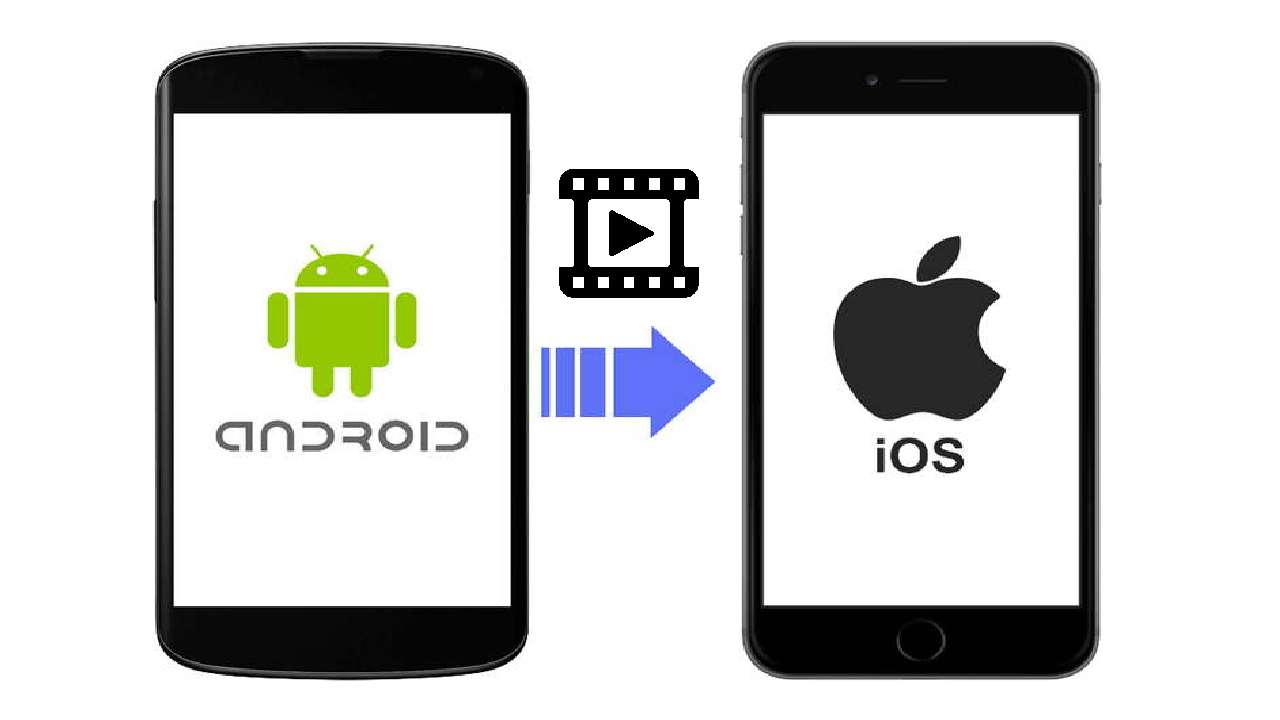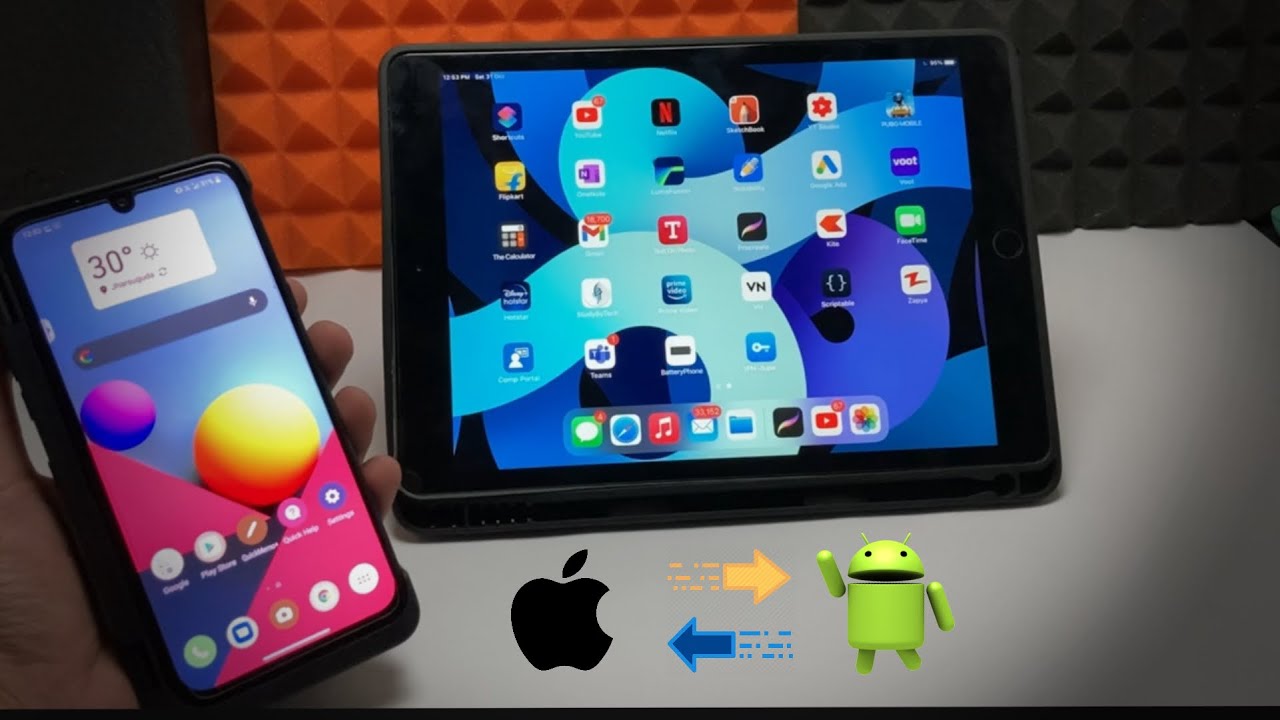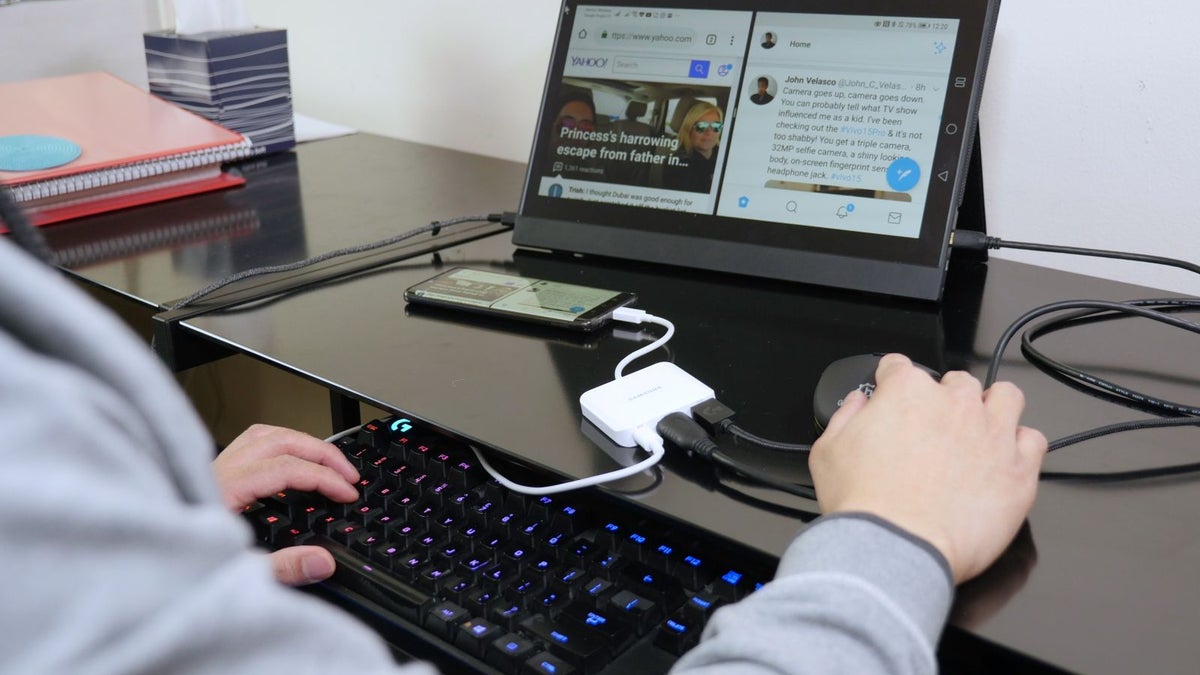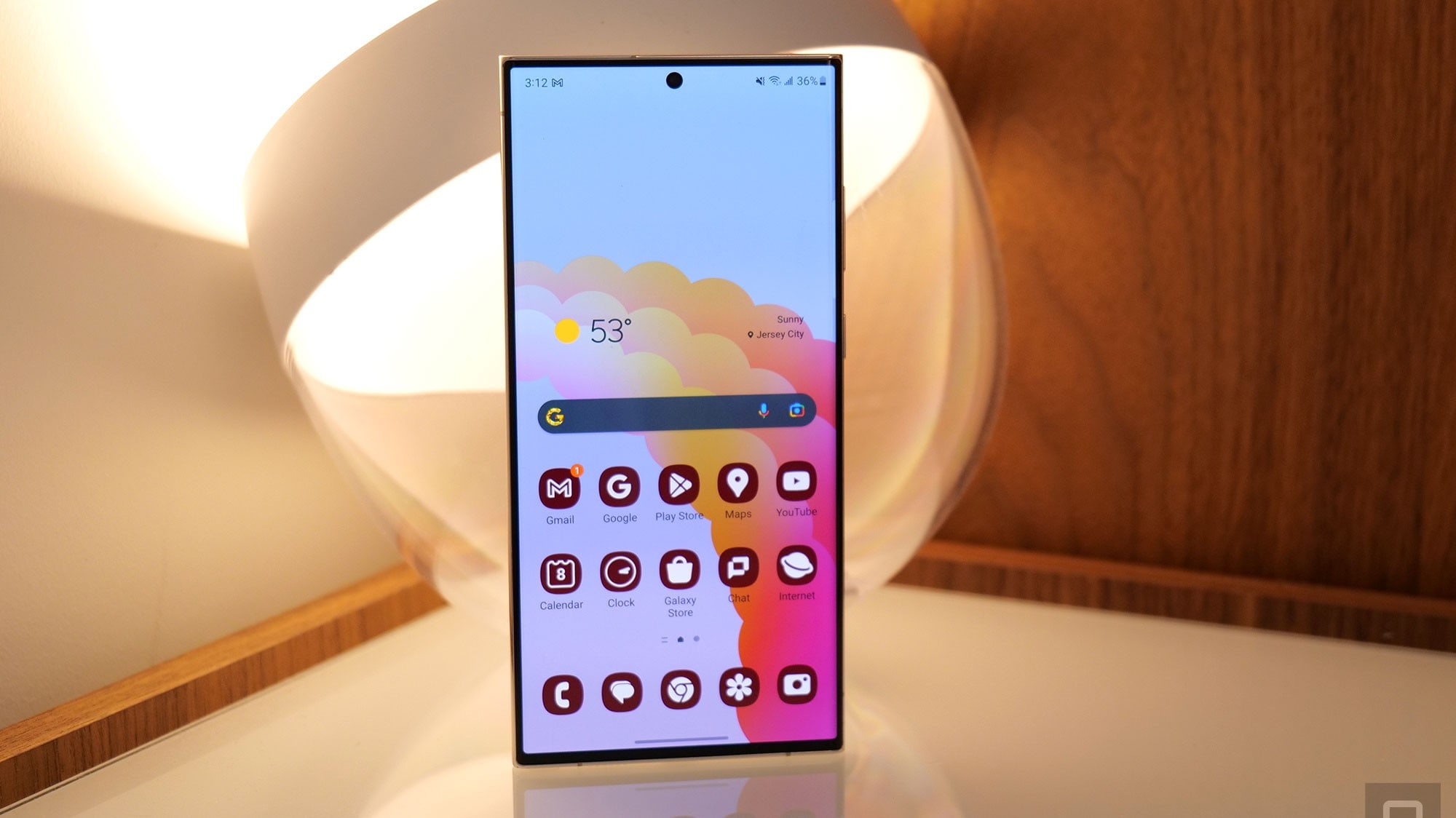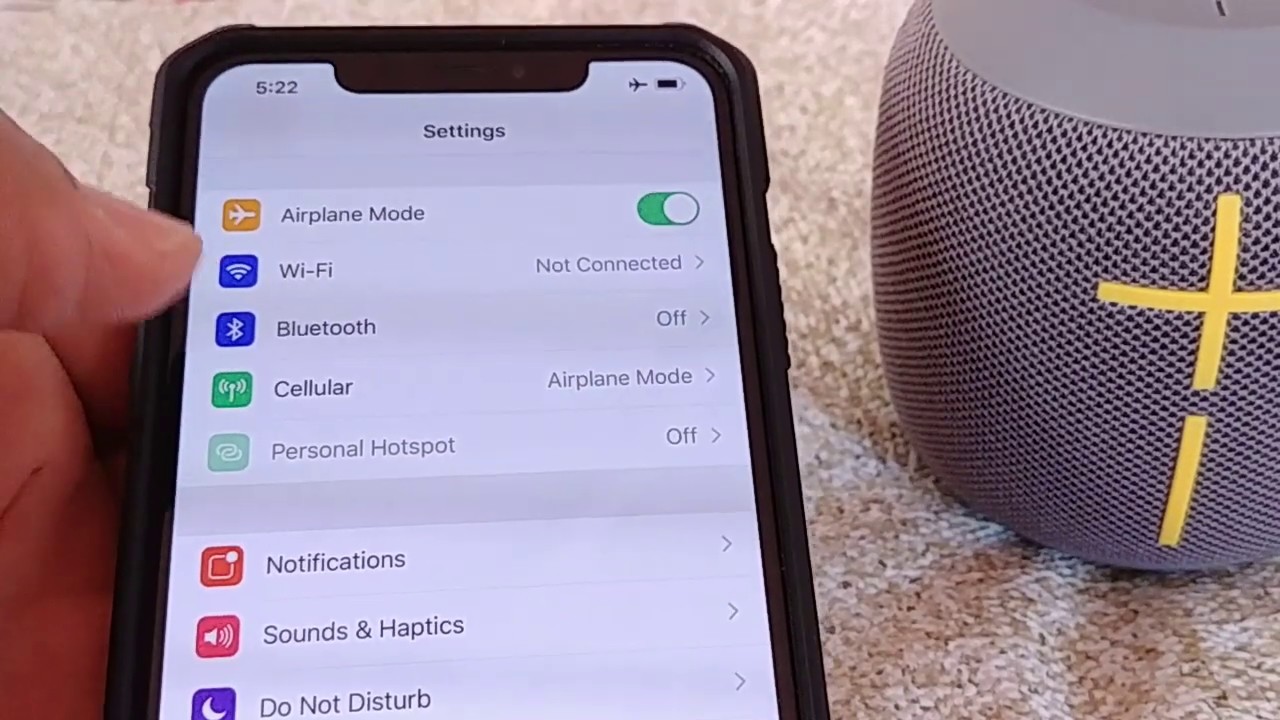Introduction
When it comes to choosing the best Android phone, it can be quite a daunting task. With numerous options available in the market, each boasting its own set of features and specifications, finding the perfect Android phone that suits your needs can be overwhelming. However, fear not, as we are here to help you navigate through the sea of Android devices and find the one that reigns supreme.
Android phones have revolutionized the way we communicate, work, and entertain ourselves. They offer a wide range of choices, from flagship devices with cutting-edge technology to budget-friendly options that still deliver on performance and features. The Android operating system provides a user-friendly interface and allows for customization, making it a popular choice among smartphone users around the world.
In this article, we will delve into the key factors to consider when choosing the best Android phone. We will discuss design and build quality, display, performance and hardware, camera quality, battery life, operating system and software, additional features, price, and value for money. By examining these aspects, you will be equipped with the necessary information to make an informed decision and find the Android phone that perfectly suits your needs and preferences.
So, whether you are a tech enthusiast looking for the latest flagship device or a budget-conscious buyer seeking value for money, we have got you covered. Read on as we explore the different aspects and features to consider when choosing the best Android phone.
Design and Build Quality
The design and build quality of an Android phone play a crucial role in determining its overall appeal and durability. A well-designed phone not only looks aesthetically pleasing but also feels comfortable to hold and use on a daily basis.
Manufacturers are constantly pushing the boundaries of smartphone design, offering sleek and stylish devices that incorporate premium materials such as glass and metal. These materials not only enhance the visual appeal of the phone but also add a sense of durability and sturdiness to the device.
When considering design and build quality, it’s important to look at factors such as the placement of buttons and ports, the thickness and weight of the phone, and the overall ergonomics. A well-thought-out design ensures easy access to essential features and provides a seamless user experience.
Additionally, features like water and dust resistance have become increasingly important in recent years. They offer peace of mind and protect your device from accidental spills or exposure to harsh environments.
Furthermore, the design of the smartphone should not only be visually appealing but also functional. A large and immersive display, minimal bezels, and a well-placed fingerprint sensor or facial recognition system are all factors that contribute to a positive user experience.
Lastly, manufacturers often provide different color options, giving users the flexibility to choose a phone that matches their personal style and preferences. Whether you prefer a bold and vibrant color or a more subtle and understated look, there are options available to suit every taste.
Overall, when evaluating design and build quality, it’s important to consider factors such as the materials used, the ergonomic design, the presence of additional features like water and dust resistance, and the overall user experience. By carefully assessing these aspects, you can ensure that you choose an Android phone that not only looks great but also feels great in your hands.
Display
The display of an Android phone is one of the most important features to consider when making a choice. It is the primary interface through which you interact with your device, so it’s crucial to choose a phone with a high-quality display that meets your specific needs.
Screen size and resolution are two key factors to consider. The size of the display will determine the overall dimensions of the phone, as well as the viewing experience. Whether you prefer a compact device that is easy to handle with one hand or a larger screen for immersive media consumption and gaming, there are options available to cater to different preferences.
In terms of resolution, a higher resolution display will provide sharper and more detailed visuals. If you enjoy watching videos, playing games, or editing photos on your phone, opting for a device with a higher pixel density will enhance your overall experience.
Another crucial aspect to consider is the display technology used. Most Android devices feature either LCD (Liquid Crystal Display) or AMOLED (Active Matrix Organic Light Emitting Diode) displays. LCD displays offer accurate color reproduction, while AMOLED displays provide vibrant colors and deep blacks. The choice between the two technologies largely depends on your personal preference.
Furthermore, features like HDR (High Dynamic Range), which enhances the contrast and color accuracy of the display, and a high refresh rate, which provides smoother scrolling and animations, can significantly enhance your viewing experience. These features are often found in flagship devices but are becoming more common in mid-range smartphones as well.
Lastly, it’s worth considering whether the display offers any additional features such as an Always-On Display, which keeps important information visible at all times, or a curved edge display, which provides a more immersive and aesthetically pleasing look.
Overall, when evaluating the display of an Android phone, it’s important to consider factors such as screen size, resolution, display technology, additional features, and your specific usage patterns. By carefully assessing these aspects, you can choose a device that offers a visually stunning and immersive display experience.
Performance and Hardware
When it comes to an Android phone, performance and hardware are crucial factors that directly impact your overall user experience. The performance of a smartphone is determined by the hardware components integrated into the device.
The processor, or CPU, is the brain of the phone. It governs the device’s speed and efficiency, affecting tasks such as app loading times, multitasking capabilities, and gaming performance. Opting for a phone with a powerful and efficient processor, such as Qualcomm Snapdragon or MediaTek Dimensity series, ensures smooth and lag-free performance.
RAM (Random Access Memory) is another important specification to consider. It determines the device’s ability to handle multiple applications simultaneously. Higher RAM capacity allows for smoother multitasking and better overall performance. For power users and gamers, phones with at least 6GB or 8GB of RAM are recommended.
In terms of storage, most Android phones offer internal storage with options ranging from 32GB to 512GB or more. More storage allows for storing a greater number of apps, photos, videos, and other files. It’s advisable to choose a phone with ample storage or one that offers expandable storage options via a microSD card slot.
Battery life is another critical aspect of performance. A long-lasting battery ensures that your phone can keep up with your daily usage without constantly needing to be plugged in. Consider the battery capacity and look for phones that offer features like fast charging or wireless charging for added convenience.
Additionally, other hardware components like the GPU (Graphics Processing Unit) and modem also play a role in the overall performance of the device. A powerful GPU enhances gaming and graphics-intensive tasks, while a capable modem provides fast internet connectivity through Wi-Fi or mobile networks.
Software optimization is equally important for overall performance. Android phones with stock or near-stock Android operating systems often offer smoother performance and timely software updates. Custom user interfaces, such as Samsung’s One UI or Xiaomi’s MIUI, may provide additional features and customization options but can sometimes impact performance.
Lastly, it’s worth considering other hardware features such as fingerprint sensors, facial recognition systems, stereo speakers, and headphone jacks, depending on your preferences and requirements.
To sum up, when evaluating the performance and hardware of an Android phone, it’s important to consider factors such as the processor, RAM, storage, battery life, software optimization, and additional hardware features. By carefully assessing these aspects, you can choose a phone that offers powerful performance and meets your specific needs.
Camera Quality
In today’s smartphone-dominated world, the camera has become one of the most significant factors in choosing an Android phone. Whether you’re a professional photographer or simply a casual user who enjoys capturing life’s moments, the camera quality of a smartphone can greatly enhance your photography experience.
When evaluating camera quality, there are several factors to consider. The primary specifications include the resolution of the camera sensors, expressed in megapixels (MP), and the aperture size, which determines the amount of light the camera lens can capture.
A higher resolution camera sensor allows for more detailed and sharp photos. However, it’s essential to note that megapixels alone do not guarantee superior image quality. The pixel size, pixel-binning technology, and image processing capabilities also play a significant role.
The aperture size of a camera lens affects low-light performance and depth of field. A wider aperture (represented by a lower f-number) allows more light into the camera, resulting in brighter low-light photos and the ability to create a shallow depth of field or bokeh effect.
Furthermore, the presence of additional camera sensors can enhance your photography options. Common secondary sensors include ultra-wide-angle lenses, telephoto lenses, and depth sensors. These lenses enable you to capture a broader field of view, zoom in without losing detail, and create professional-looking portrait photos with artificial background blur.
Software processing also plays a significant role in camera quality. Features like Optical Image Stabilization (OIS), Electronic Image Stabilization (EIS), and Night mode can greatly enhance image stabilization and low-light photography. HDR (High Dynamic Range) algorithms can ensure that both the highlights and shadows in your photos are well-balanced.
Additionally, the camera app’s user interface, ease of use, and availability of manual controls can greatly impact your photography experience. Some phones offer a variety of shooting modes, such as Pro mode for manual adjustments, Portrait mode for creating bokeh effects, and Night mode for low-light photography.
It’s also important to consider video capabilities. Look for features like 4K video recording, stabilization, and the availability of slow-motion or time-lapse modes if you are interested in capturing high-quality videos.
Lastly, don’t forget to consider the quality of the front-facing or selfie camera, especially if you enjoy taking selfies or participating in video calls. Selfie cameras with higher resolutions and advanced features like beauty modes can ensure that your self-portraits look stunning.
In summarizing the camera quality, it’s essential to consider factors such as camera resolution, aperture size, additional camera sensors, software processing, user interface, video capabilities, and front-facing camera quality. By carefully assessing these aspects, you can choose an Android phone that delivers outstanding photography capabilities and allows you to capture stunning moments with ease.
Battery Life
Battery life is a critical factor to consider when choosing an Android phone, as it directly impacts how long your device can last on a single charge. A phone with a long-lasting battery ensures that you can go about your day without constantly worrying about running out of power.
When evaluating battery life, it’s important to consider the battery capacity, typically measured in milliampere-hours (mAh). A higher battery capacity generally translates to longer usage time. However, it’s worth noting that the actual battery life may vary based on various factors, such as screen-on time, app usage, and network connectivity.
In addition to capacity, the efficiency of the phone’s hardware components, such as the processor and display, also affects battery life. Modern Android phones often feature power-efficient processors and optimized display technologies, which help prolong the battery life by reducing energy consumption.
Software optimization plays a crucial role as well. Manufacturers often implement battery-saving mechanisms, such as adaptive battery management and power-saving modes, which restrict certain functionalities to conserve battery life. Additionally, the latest versions of the Android operating system often come with improved power management features that optimize background activity and prioritize battery usage.
Charging capabilities are another aspect to consider. Fast charging technology allows you to quickly recharge your phone’s battery, minimizing downtime. Look for phones that support fast charging protocols like Qualcomm Quick Charge or USB Power Delivery (PD), as they can significantly reduce charging time.
Wireless charging is also becoming more common in Android phones. This convenient feature allows you to charge your device by simply placing it on a compatible wireless charging pad, eliminating the need for cables. While not as fast as wired charging, it offers convenience and flexibility.
It’s worth noting that battery life can also be affected by user behavior and app usage. Excessive gaming, streaming videos, or using power-hungry apps can drain the battery more quickly. It’s essential to strike a balance between your usage patterns and the expected battery life of your chosen device.
Lastly, real-world user reviews and battery tests conducted by reputable sources can provide valuable insights into the actual battery performance of a phone. These tests often simulate typical usage scenarios, providing a better understanding of how long the battery will last under normal conditions.
By considering factors such as battery capacity, hardware efficiency, software optimization, charging capabilities, and real-world performance, you can select an Android phone that provides reliable and long-lasting battery life, keeping you powered throughout the day.
Operating System and Software
The operating system (OS) and software on an Android phone are important aspects to consider as they determine the overall user experience, functionality, and available features. When choosing an Android phone, it’s crucial to opt for a device that offers a user-friendly OS and regularly receives software updates.
The Android operating system is renowned for its openness and customization options. Look for phones that run on the latest version of Android, as newer versions often bring improvements in performance, security, and features. Additionally, phones with stock Android or near-stock Android offer a clean and intuitive user interface, providing a seamless and bloatware-free experience.
Manufacturers often overlay custom user interfaces (UI) on top of the stock Android OS. These UIs, such as Samsung’s One UI, Xiaomi’s MIUI, or OnePlus’ OxygenOS, offer additional features, customization options, and a distinct look and feel. While these custom UIs can provide a unique experience, they can also impact performance and delay software updates.
Regular software updates are important for security patches, bug fixes, and new features. Look for manufacturers with a reputation for providing timely updates to ensure your phone remains secure and up-to-date. Google Pixel phones, for example, receive Android updates directly from Google, while other manufacturers may have their own update schedules.
In addition to the OS, pre-installed apps, or bloatware, can impact the overall user experience. Some manufacturers include a range of pre-installed apps that may not be necessary or may take up valuable storage space. Look for phones that offer minimal bloatware or the option to uninstall or disable unwanted apps.
Integration with services and ecosystems is another consideration. If you use other Google services, such as Gmail, Google Drive, or Google Photos, choosing a phone that seamlessly integrates with these services can enhance your productivity and convenience. Additionally, compatibility with popular applications and services, such as social media platforms or streaming apps, is important to ensure a smooth and enjoyable user experience.
Finally, user reviews and feedback can provide insights into the overall software experience. Consider reading reviews and opinions from other users to understand their experiences with the OS, software features, and general usability.
By carefully evaluating factors such as the OS version, customization options, timely software updates, bloatware, integration with services, and user feedback, you can choose an Android phone that offers a user-friendly interface, a seamless software experience, and access to the latest features and security updates.
Additional Features
Aside from the core specifications and functionality, Android phones often come with a variety of additional features that can enhance your user experience and make your device stand out from the crowd. When evaluating an Android phone, it’s worth considering these additional features and determining which ones are important to you.
Fingerprint sensors or biometric authentication methods have become increasingly common and provide an added layer of security. These features allow you to securely unlock your device or authenticate payments without the need for a PIN or password.
Facial recognition technology is another biometric authentication method that has gained popularity. By utilizing advanced facial mapping technology, phones can securely recognize your face and grant access to the device. This feature offers convenience and can be particularly useful when wearing gloves or in dimly lit environments.
Many Android phones are now equipped with water and dust resistance. These devices are designed to withstand immersion in water up to a certain depth for a specified period. This feature provides peace of mind, allowing your phone to survive accidental spills or exposures to wet environments.
Expandable storage via a microSD card slot can be an essential feature if you need additional space for storing photos, videos, or applications. This can help prevent your phone from running out of storage and give you the flexibility to expand as needed.
Wireless charging is becoming increasingly popular and offers a convenient way to charge your device. With compatible charging pads, you can simply place your phone on the pad to initiate charging, eliminating the need for cables and fumbling with connectors.
USB-C connectivity has become the standard for charging and data transfer. This versatile reversible connector allows for faster charging and data transfer speeds compared to older USB standards. It also simplifies the process of connecting your phone to other devices, such as laptops or external storage.
Stereo speakers can greatly enhance your multimedia experience. Dual speakers provide a more immersive sound experience, making gaming, movie watching, and listening to music more enjoyable. Some phones also offer support for advanced audio technologies, such as Dolby Atmos, for an enhanced audio experience.
Advanced camera features can include modes like Pro mode, which allows for manual camera controls, or AI scene recognition, which automatically adjusts camera settings to optimize the quality of the photo. These features can elevate your photography skills and help you capture stunning shots in various conditions.
Additional features like infrared blaster, wireless screen mirroring, NFC (Near Field Communication) for contactless payments or file sharing, and dual SIM capability can also be factors to consider depending on your individual needs and preferences.
By evaluating the additional features and determining which ones are essential for your daily use, you can choose an Android phone that offers the functionality and convenience that align with your requirements.
Price and Value for Money
Price is a crucial factor to consider when choosing an Android phone, as it directly impacts your budget and the overall value you receive for your money. Android phones are available in a wide range of price points, from budget-friendly options to premium flagship devices. It’s important to assess the features, specifications, and overall value offered by a phone in relation to its price.
Budget-friendly Android phones often offer a great value for money, providing essential features and decent performance at an affordable price. These devices cater to individuals who prioritize basic smartphone functionalities without the need for cutting-edge specifications or advanced features. Although they may not offer high-end camera capabilities or the latest hardware, budget-friendly phones can still deliver reliable performance for everyday tasks.
Mid-range smartphones strike a balance between affordability and performance. They typically offer a better camera setup, more powerful processors, and improved design compared to budget options. Mid-range devices are suitable for users who require a higher level of performance, whether for multitasking, gaming, or photography, without breaking the bank.
Premium flagship Android phones command higher prices but offer the latest and most advanced features, top-of-the-line hardware, and cutting-edge design. These devices are ideal for tech enthusiasts and power users who demand the best performance, exceptional camera capabilities, and premium build quality. Flagship phones often come with additional benefits, such as longer software support and faster software updates.
When considering the price of an Android phone, it’s important to assess the overall value you will receive for your money. Don’t solely focus on the price tag, but also consider the quality and longevity of the device. A slightly higher-priced phone with better build quality, more extensive software support, and a superior camera may offer better value in the long run.
It’s also worth considering the after-sales service and warranty provided by the manufacturer or retailer. Reliable customer support and a generous warranty can provide peace of mind, especially when investing in a higher-priced device.
Additionally, it’s advisable to research and compare prices from various retailers and online platforms. The price of a particular phone may vary between different sellers, so taking the time to find the best deal can save you money.
Overall, when assessing the price and value for money of an Android phone, consider the features, specifications, build quality, software support, after-sales service, and your specific needs and budget. By carefully evaluating these factors, you can choose an Android phone that offers the best value for your money and meets your requirements.
Conclusion
Choosing the best Android phone for your needs can be a challenging task, but by considering the various factors discussed in this article, you can make an informed decision that aligns with your preferences and budget.
Design and build quality play a crucial role in the overall appeal and durability of a phone. Opt for a device that not only looks great but also feels comfortable to hold and use on a daily basis.
The display is your primary interface, so consider factors such as size, resolution, and technology to ensure an immersive viewing experience.
Performance and hardware are essential for smooth multitasking, gaming, and overall device efficiency. Look for phones with powerful processors, sufficient RAM, and ample storage capacity.
Camera quality is a significant consideration, especially in the era of social media and capturing memories. Evaluate factors like resolution, aperture size, additional camera sensors, and software processing to choose a device that suits your photography needs.
Battery life is a crucial factor for uninterrupted usage throughout the day. Consider the battery capacity, hardware efficiency, software optimization, and charging capabilities to find a phone that meets your power requirements.
The operating system and software contribute to the overall user experience. Opt for a device that offers a user-friendly interface, regular software updates, and minimal bloatware for a seamless and up-to-date software experience.
Additional features like biometric authentication, water and dust resistance, expandable storage, wireless charging, and advanced camera capabilities provide added convenience and functionality.
Lastly, assess the price and value for money based on the overall features, specifications, build quality, and warranty offered by the phone. Pay attention to individual needs, budget, and the after-sales service provided by the manufacturer or retailer.
By carefully considering these factors, you can choose an Android phone that perfectly suits your needs, enhancing your smartphone experience and ensuring that you get the most out of your device.







